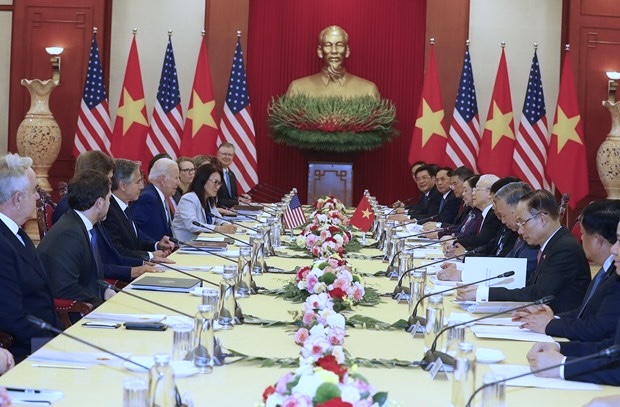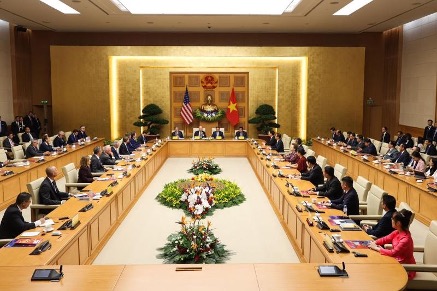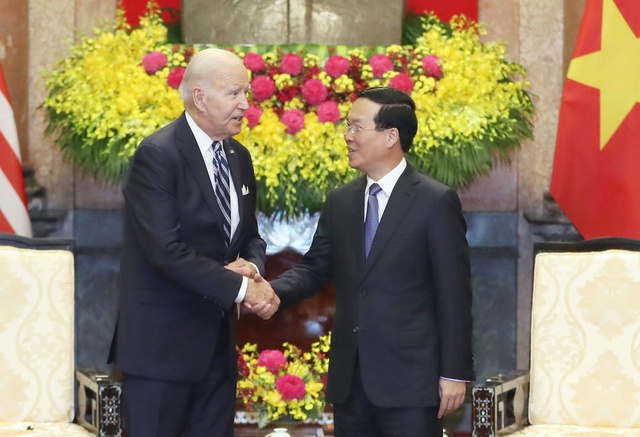| By Han Tran |
Nations Continue Building Bonds Through Bilateral Trade
The commercial connection between the United States and Vietnam has developed enormously since the United States eased trade restrictions on Vietnam in 1994 and the two nations normalized relations in 1995. Nearly thirty years after normalization, the United States has become Vietnam’s largest export market and a major source of foreign direct investment, helping to drive the country’s outstanding economic growth. On September 10-11, 2023, President Biden led a state visit to Vietnam, where he joined the General Secretary of the Communist Party of Vietnam Nguyen Phu Trong. The US Department of Commerce described the meetings between the leaders as “a historic new phase of cooperation by elevating the bilateral relationship to a Comprehensive Strategic Partnership (CSP).” Since forming a Comprehensive Partnership in 2013, bilateral commerce between the U.S. and Vietnam has increased by 360%, from $39 billion in 2012 to over $116 billion in 2022. Over the last five years, Vietnam’s export revenues to the United States have surged by 230%, and Vietnam was also the United States’ ninth-largest export destination in 2021, with exports totaling around $3.5 billion.
Vietnam’s Exports to the US Surge After Relations Normalized
Vietnam does not export services into the trade market. Instead, its exports to the United States include a wide range of products, with broadcasting equipment accounting for 19.7% of the total, namely for United States technology manufacturing firms like Apple and Intel. Other important exports include furniture, office machine components, textiles, footwear, and so on. These exports totaled $117 billion in 2022, up significantly from $208 million in 1995.

The Importance of Raw Cotton in Bilateral Trade
In 2022, the United States exported $11.4 billion in products to Vietnam. Cotton valued at $1.11 billion, integrated circuits at $1.07 billion, and broadcasting equipment at $774 million were among the most important exports. Other important exports were corn, dairy products, soybeans, and distillers’ grains. In addition, the United States exported $2.24 billion in transportation, tourism, and financial services in 2022, a 26.1% increase over 2021. Over the last 27 years, US exports to Vietnam have increased at a 15.3% annual pace, from $244 million in 1995 to $11.4 billion in 2022.
Challenges and Successes in Bilateral Trade
The trade market with the U.S. plays a crucial role in driving Vietnam’s stable economy. Notably, COVID-19 did not reduce Vietnam’s GDP in 2020; instead, it increased by 2.9% in 2020 and by around 2.3% in 2021. However, global trends have a considerable influence on the export industry of the United States. For example, a drop in global apparel demand may cut Vietnam’s cotton imports from the United States. Moreover, the most important barriers to a varied range of US food and agricultural exports will be relatively high tariffs and intense competition from nations that benefit from preferential trade agreements with Vietnam.
During Vietnam’s economic crisis in the export industry caused by a decline in global demand in 2023, goods exports fell 7.4% year-on-year. To address this issue, numerous solutions have been introduced. Many agricultural trade irritants for the United States have been mitigated by active engagement. Vietnam has enhanced its meat and poultry plant registration procedure, resumed the licensing process for biotechnology goods, and widened access to non-tropical fresh fruits like blueberries and oranges. Vietnam’s demand for feed ingredients will continue to rise as the livestock industry benefits from the anticipated recovery of the food and hospitality industries. With considerable foreign direct investment, Vietnam is projected to rebound fast from the present global economic slowdown.
Shared Pasts and Shared Futures
Vietnam and the United States foreign trade has grown exponentially since 1995, culminating in the Comprehensive Strategic Partnership in 2013. Both countries are benefiting from a wide range of commercial exchanges and diverse exports. Despite challenges such as shifting global trends and tariff hurdles, proactive initiatives have been implemented to reduce impediments and promote ongoing growth. As both countries enhance their economic collaboration, Vietnam and the United States are better positioned to overcome difficulties and capture opportunities in an ever-changing global economy.




